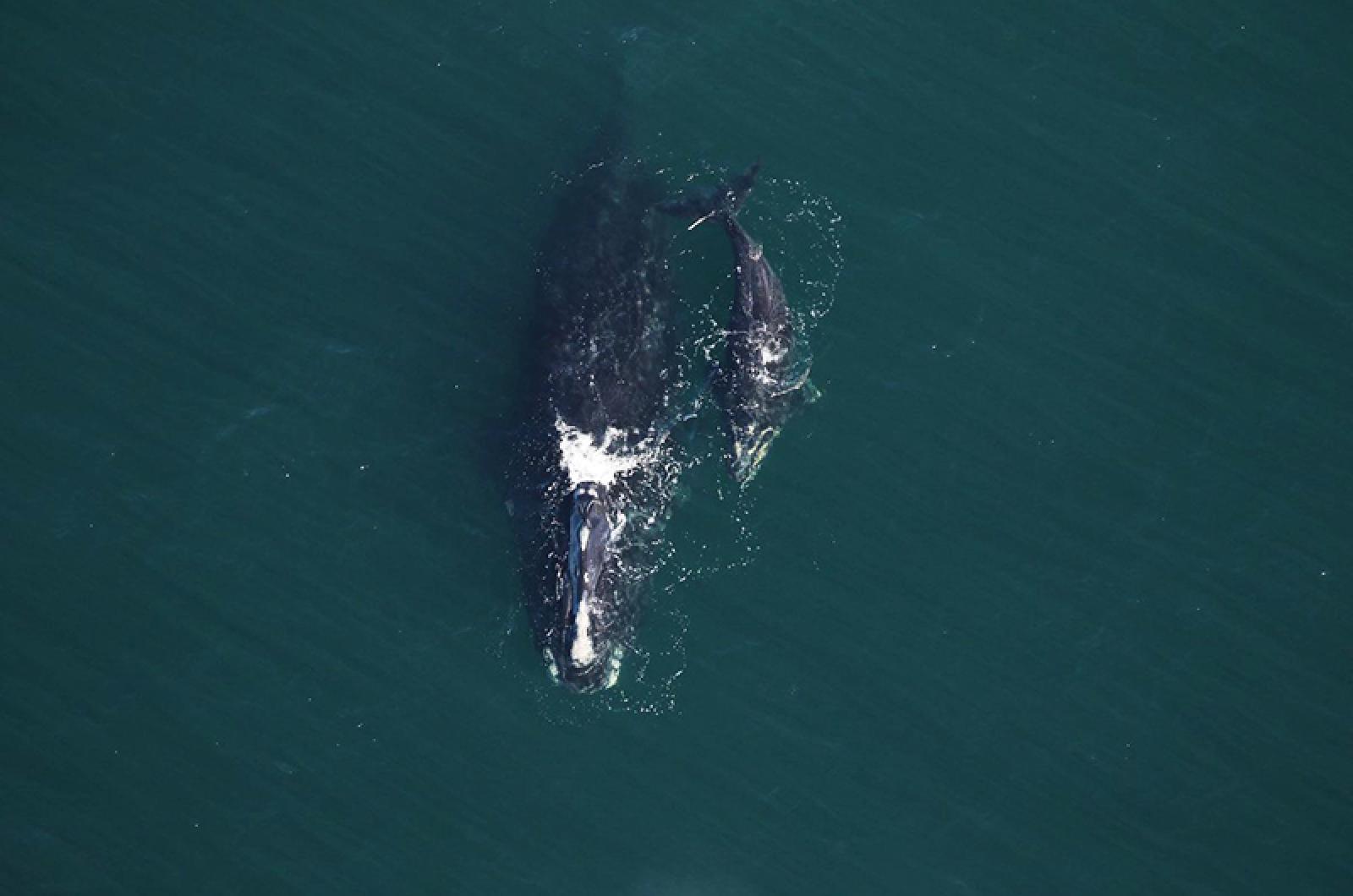A public comment period has opened on a slate of new proposed federal lobster and crab pot regulations as a last-ditch regulatory campaign to save North Atlantic right whales continues to accelerate.
Although the critically endangered species has already seen four calves born this year — providing hope to scientists — right whales continue to inch perilously close to extinction, with fewer than 400 likely remaining in North Atlantic waters.
The proposed federal regulations, pitched by NOAA Fisheries as the first modifications to the agency’s Atlantic Large Whale Take Reduction Plan since 2015, include a new seasonal restricted fishing zone south of Nantucket, as well as other closures north and east of Cape Cod, gear modifications and allowances for ropeless fishing in an attempt to reduce the risk of whale entanglement.
The regulations come on top of a recently proposed statewide ban on lobstering that would run from February through April in all state waters. A spokesman with NOAA Fisheries, Allison Ferreira, said the federal regulatory team worked closely with state officials to devise the rules, and confirmed that the proposed modifications would come in addition to any newly-enacted state measures.
While the federal closure would also run from February through April, it would apply to a different swath of state and federal waters that stretches about 50 nautical miles south of Nantucket. Part of the federal closure would overlap with the state closure.
The regulations also include gear modifications that require state-specific colors, reductions in vertical buoys by requiring more traps between lines and the introduction of weak insertions into buoy lines. But seasonal closure areas would now be open to ropeless fishing, according to the new rules, which apply to the lobster and Jonah crab fisheries.
In a statement that NOAA Fisheries released with the proposed modifications, assistant fisheries administrator Chris Oliver said the regulations were focused on reducing whale entanglements by 60 per cent across the Atlantic seaboard, and that the Jonah crab and lobster industries were responsible for 93 per cent of all buoy lines where right whales occur. Mr. Oliver said that NOAA was planning on developing regulations for other gillnet and trap fisheries in 2021.
According to NOAA’s impact analysis, the regulations would affect 2,500 vessel fishermen.
Public comment on the proposed federal regulations opened on Dec. 30, 2020 and runs until March 1. Regulators also plan to hold a public hearing on Feb. 16 at 6:30 p.m. to discuss the proposed modifications to the take reduction plan.
Meanwhile, two aggregations of right whales were spotted west and south of the Vineyard in recent days, according to NOAA. The agency has instituted voluntary vessel speed restriction zones south and west of the Vineyard that limit mariners to 10 knots in the area.
The first recent aggregation was spotted on Dec. 30 by a group of protected species observers aboard the wind farm survey vessel Ventus 21 nautical miles south of the Island. One day later, on Dec. 30, a second aggregation was detected acoustically when the Woods Hole Oceanographic Institution’s Cox Ledge Slocum glider noticed whales 32 nautical miles west of the Vineyard.
The Slocum glider is a torpedo-shaped underwater vessel that glides near the surface to record oceanographic information for WHOI. Because right whales make unique sounds, the glider and other arrays in the water can detect them acoustically.
“These are opportunistic sightings,” Ms. Ferreira said.
Ms. Ferreira did not know how many whales were spotted in the groupings because the sightings did not occur aerially.
Both vessel speed restrictions are in place until Jan. 14, with the western one extended to Jan. 15.
Scientists have also received a rare bit of good news this winter, with research and surveillance teams in Florida and Georgia already spotting at least four new right whale calves in coastal waters. Right whales traditionally travel south to give birth during the winter months.
The species is currently undergoing an unusual mortality event, with 32 known deaths and 11 serious injuries in the past three years. During the same time, right whales have also experienced declining birth rates. After no known calves were spotted in 2018, the 2019 and 2020 seasons saw approximately 10 per year. Only 22 births have been noted in the past four calving seasons.
The most recent calf was spotted on Dec. 29, 2020 off Sapelo Island, Ga. The mother is a 27-year-old female named Nauset. Ms. Ferreira said that the new calf represented the fourth known time Nauset had given birth.






Comments (2)
Comments
Comment policy »